September is still a bit hot, but it brings a promise of cooler days to come. It is a good month
to rejuvenate your flower beds for the fall and winter growing seasons. Now is a good time to divide and plant perennials
and continue to scout for pests in the landscape. If you have perennials in your landscape,
now is a good time to divide them. There are three reasons to divide perennials: to control the size of the plants,
to help rejuvenate them so that they keep blooming, and to increase their number.
Dividing:
Gingers are among our finest perennial plants. During the summer months they usually produce
an abundance of new growth. To assure good growth next year,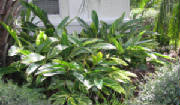 dig up and divide rhizomes. Shell ginger (Alpinia zerumbet) is a vigorous grower that produces magnificent
pinkish, shell-shaped flowers looking much like a cluster of grapes. Dig up a rhizome and cut it leaving an immature
sprout or two on each section. The rhizomes should be planted only about two to three inches deep. The gingers
require little care other than moist soil, afternoon shade and occasional fertilization.
dig up and divide rhizomes. Shell ginger (Alpinia zerumbet) is a vigorous grower that produces magnificent
pinkish, shell-shaped flowers looking much like a cluster of grapes. Dig up a rhizome and cut it leaving an immature
sprout or two on each section. The rhizomes should be planted only about two to three inches deep. The gingers
require little care other than moist soil, afternoon shade and occasional fertilization.
Daylilies
(Hemerocallis spp.) which have grown prolifically during the summer months are now beginning a short period
of dormancy. As daylilies age they produce a thick clump of growth over time which can result in weak plants that do
not bloom well. Divide them by digging the entire clump up, separate each individual plant or fan and replant them a little
higher than they were in the original clump. There will be a large tuber-like growths on the root system - do not remove
these storage organs that help to promote further growth.
Stokes aster (Stokesia
laevis) is another perennial that has a tendency to 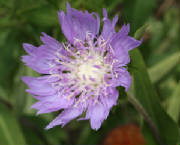 become too dense so it should be divided now. The long, large roots may be reduced to make transplanting easier.
Like the daylilies, there are many plants within the clump. They should be separated and set slightly higher than their
original depth.
become too dense so it should be divided now. The long, large roots may be reduced to make transplanting easier.
Like the daylilies, there are many plants within the clump. They should be separated and set slightly higher than their
original depth.
This is also the time of year to dig bulbs. Separate and plant
the small bulbs that form around the large central bulb, and then replant the older bulb. Amaryllis (Hippeastrum)
has a tendency to draw its bulbs into the ground. When replanting, make sure that the top 1/3 of the bulb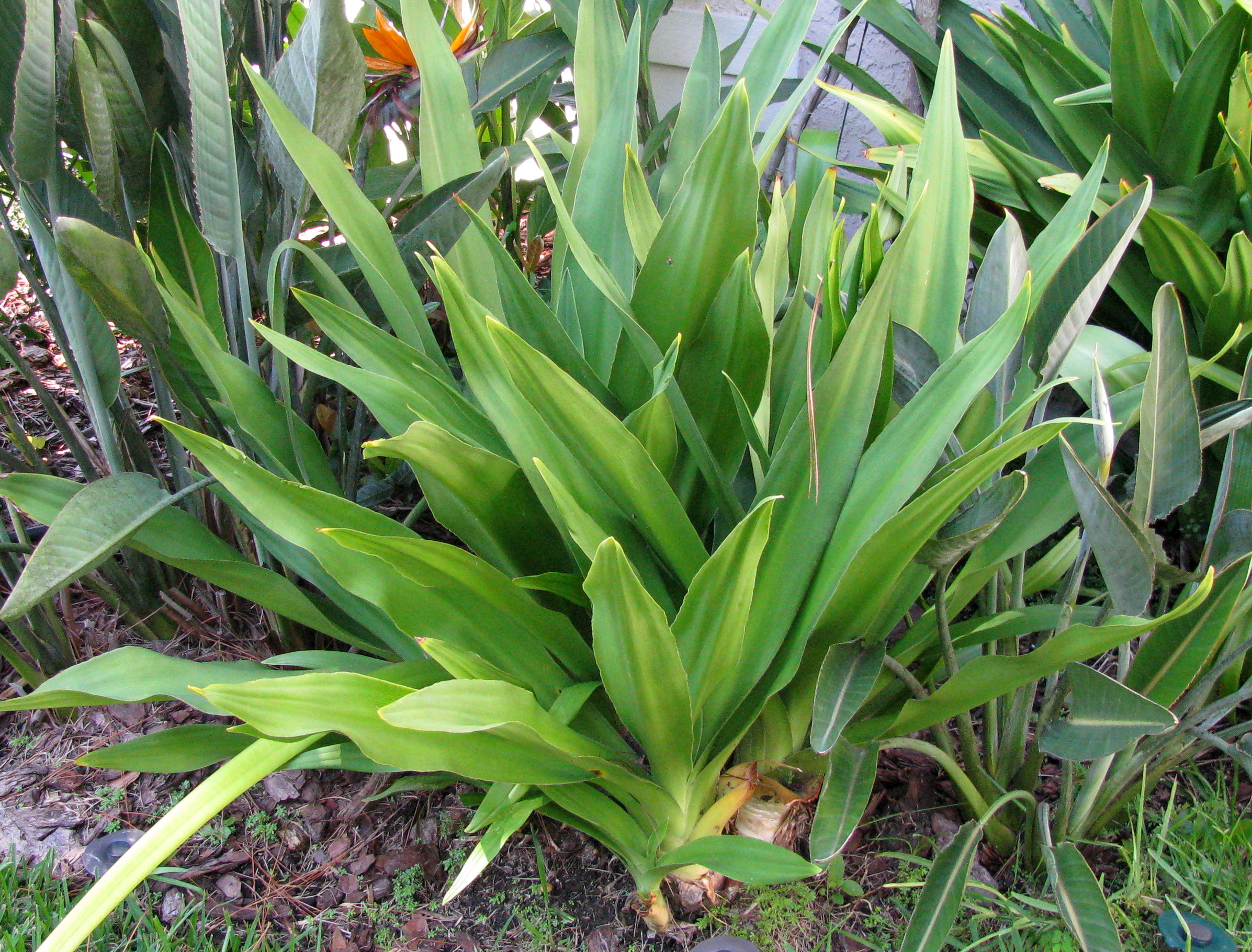 exposed to insure blooms. This applies to other bulbs in the Amaryllis family like Spider lily /or
Alligator lily (Hymenocallis spp.) and Rain lily (Zephyranthes
spp). The large native Crinum or Swamp lily (Crinum
americanum) can also be divided now.
exposed to insure blooms. This applies to other bulbs in the Amaryllis family like Spider lily /or
Alligator lily (Hymenocallis spp.) and Rain lily (Zephyranthes
spp). The large native Crinum or Swamp lily (Crinum
americanum) can also be divided now.
Pests:
Whiteflies can be very damaging. Check citrus, gardenias, camellias, and other host plants.
The 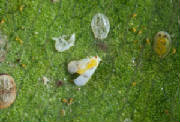 nymphs feed on the underside of leaves. One sure sign of an infestation of whiteflies is the presence of black sooty
mold on the top of the leaves. Adult whiteflies are attracted to yellow. Yellow sticky cards can be used as an
alternative to chemical pesticides. Place the card near the plant so that as the adults mature they will fly to the
cards and get stuck. If you use a chemical control, follow label directions carefully as some chemicals are not labeled
for certain plants.
nymphs feed on the underside of leaves. One sure sign of an infestation of whiteflies is the presence of black sooty
mold on the top of the leaves. Adult whiteflies are attracted to yellow. Yellow sticky cards can be used as an
alternative to chemical pesticides. Place the card near the plant so that as the adults mature they will fly to the
cards and get stuck. If you use a chemical control, follow label directions carefully as some chemicals are not labeled
for certain plants.
Be on the lookout for fall armyworms in all types
of lawns. Armyworms are the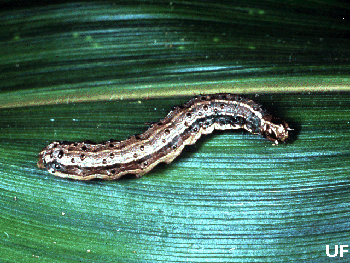 larvae of moths. When full grown, the larvae are about 1 ½ inches long, yellowish brown to black with a wide,
dark stripe on each side of a midstripe that ends in an upside-down (Y) on their head. Their feeding can cause circular
bare areas in the lawn. Always follow label directions when applying pesticides.
larvae of moths. When full grown, the larvae are about 1 ½ inches long, yellowish brown to black with a wide,
dark stripe on each side of a midstripe that ends in an upside-down (Y) on their head. Their feeding can cause circular
bare areas in the lawn. Always follow label directions when applying pesticides.
Continue
to watch for chinch bugs in St. Augustine 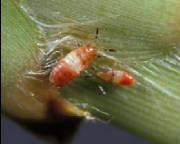 lawns. They can do a lot of damage in a short amount of time. Chinch bugs are becoming resistant to the insecticides
that we currently have to use. So, it is very important to rotate insecticides with different modes of action each time
you treat your lawn to reduce resistance. To find mode of action for differing insecticide active ingredients see the
chart in the University of Florida publication on controlling chinch bugs in St. Augustinegrass: http://edis.ifas.ufl.edu/pdffiles/LH/LH03600.pdf.
lawns. They can do a lot of damage in a short amount of time. Chinch bugs are becoming resistant to the insecticides
that we currently have to use. So, it is very important to rotate insecticides with different modes of action each time
you treat your lawn to reduce resistance. To find mode of action for differing insecticide active ingredients see the
chart in the University of Florida publication on controlling chinch bugs in St. Augustinegrass: http://edis.ifas.ufl.edu/pdffiles/LH/LH03600.pdf.
Choose a different active ingredient from the "Chemical Class" column in the
publication listed above to use each time you treat your lawn. Follow the directions on the label carefully, paying
close attention to the safety precautions regarding the protective clothing to wear. These chemicals can be absorbed
through the skin, so use them cautiously.
When you apply pesticides, apply them sparingly
in the early evening to reduce the harm to our bees and other pollinators.

